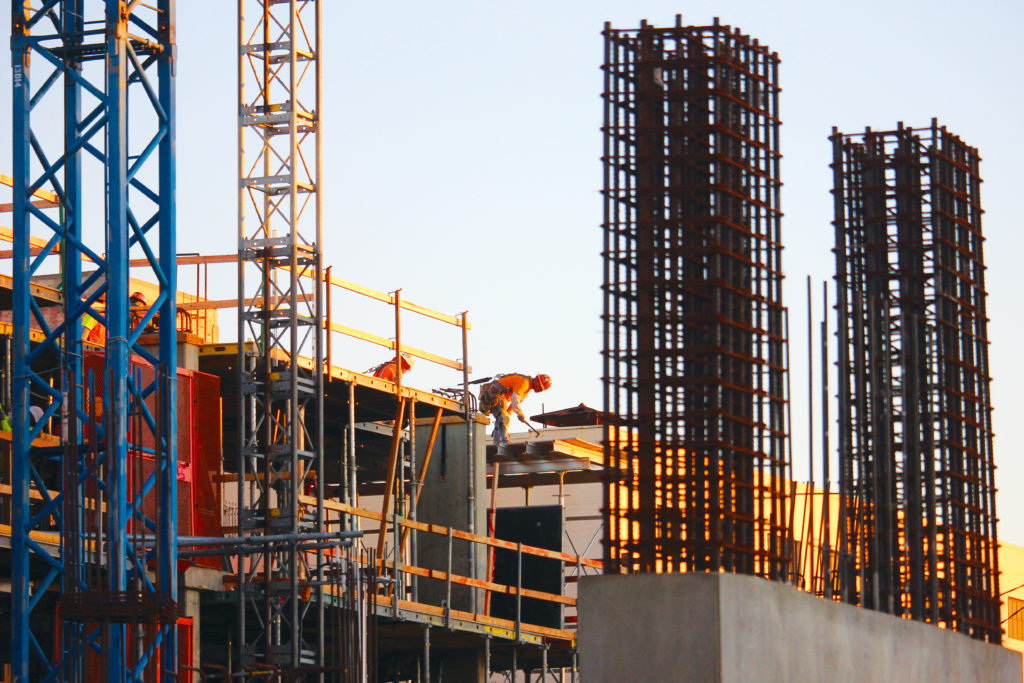What do you do with a city’s core when its defining element is an empty mall, a hulking structure that blocks off traffic and pedestrian flow through the downtown area? How do you lay the groundwork for something better?
In January 2012, Long Beach approved a new plan for its downtown area. It was a bold vision, one that put some of the responsibility for environmental approval of developments on the city’s shoulders, one that asked residents to adopt a new way of thinking about parking, transportation and what kind of businesses should be in an urban core.

So far, planners and those involved in the process say, that gamble is paying off.
“We had to convince them that this is the way to go. And look at what has happened,” says Suja Lowenthal, former 2nd District city councilmember and vice mayor of Long Beach during the time the plan was developed. She is now the city manager of Hermosa Beach.
Since the plan was adopted, in the relatively small area that comprises downtown proper there have been 534 residential units completed and occupied, another 1,346 residential units in the construction phase and another 2,620 approved and awaiting groundbreaking.
It’s a major transformation, but to bring it along required a major re-visioning of what a downtown should look like and how to get it to happen.
“When I was a resident in downtown – for seven years we were there, even before I ran for office – I realized that we had a dying, barely functioning mall. It was a cavernous thing, and it was a visual sign that downtown was dying,” Lowenthal says.
“There was some development coming in. But what was obvious was that every project was built on a variation [from development guidelines]. They could just not build something that was right for downtown without variation. And when you’re always asking for variations, residents start to think that you’re asking for something that you shouldn’t be asking for.”
So it was apparent that the city’s existing codes did not account for what developers were looking for in downtown projects, and that the city’s guidelines were not attracting the projects the city wanted. Someone looking at the plans in place at the time wouldn’t really know what the city wanted.
“We were not following practices that cities follow when they are on the path to . . . turning their downtown around to be the heart and soul of their cities. There was no North Star, so to speak. We had a lot of turning around to do,” Lowenthal says.
“It was the right time and the right mix of disasters that made it obvious that we couldn’t put this off anymore. The only way to do that was to update the planning and zoning codes. Otherwise, you could not define a vision. For me [as] an urban planner – it could not have been better. I could not squander that opportunity.”
The plan, developed over a span of years, reduced the emphasis on the automobile. Parking requirements were reduced, and pedestrian-oriented, ground-floor uses were encouraged to help “activate” downtown’s streets, says Linda Tatum, director of Long Beach Development Services.
“There is an emphasis on sustainability, on walkability,” Tatum says. “The developments had to contribute to downtown. The ground floor had to be ‘activated’ – encouraging interaction with the pedestrian traffic. You’re not looking at a blank wall when you are walking down the street,” she says.

Concurrently, the plan created a greater emphasis on public transit as a way of getting to and getting around downtown, rather than requiring vast expanses of parking.
“Over time, transit service will get better. And with the advent of alternative travel modes, we went with a transit-oriented development approach. We minimized parking as a way of incentivizing people coming in to downtown, and we wanted to use a transit-oriented approach to incentivize people to use alternative transit modes,” Tatum says. “In the most successful downtowns, you don’t find a lot of parking.”
And lastly, the city shouldered part of the heavy lifting when it came to environmental approvals. Instead of requiring each new development to generate a complete environmental impact report (EIR) on its own, the city created a Program Environmental Impact Report. This report, in a nutshell, covered a lot of the ground that would be common to each individual project and addressed the issues associated with growing downtown comprehensively, rather than development by development.
“When someone came in with a proposal, they didn’t have to do the complete EIR. They could supplement it with technical studies that take a few months rather than a few years,” Tatum says. Not only does this speed the approval process, but it makes the developments more attractive to the investment community.
In Tatum’s view, the plan is a statement about what the city wants and a statement that the city is willing to work to make it happen.
“It demonstrated the city’s knowing what it wanted in the downtown, and the city council and the community saying, ‘We know what we want, we want to continue to improve it, and we want to be a world-class city.’ And we have this plan to demonstrate our commitment to it,” she says. “It is the city kind of grasping its destiny by the horns.”
For Lowenthal, the plan sets the tone and the city’s expectations for new development for anyone thinking of coming into the downtown area.
“Without it, we would have seen some stagnation, and when we saw something developed, it would have been piecemeal and mediocre. We did not have anything to incentivize developers to bring their A-game. With the plan in place, we were able to say, if you’re not bringing your best, don’t bother,” Lowenthal says.
“We would not have been able to set the standards for what the residents deserve, and for what future generations deserve.”
